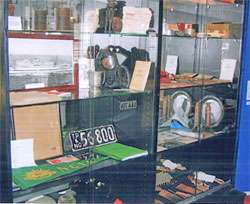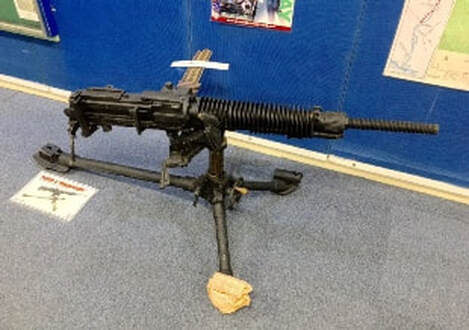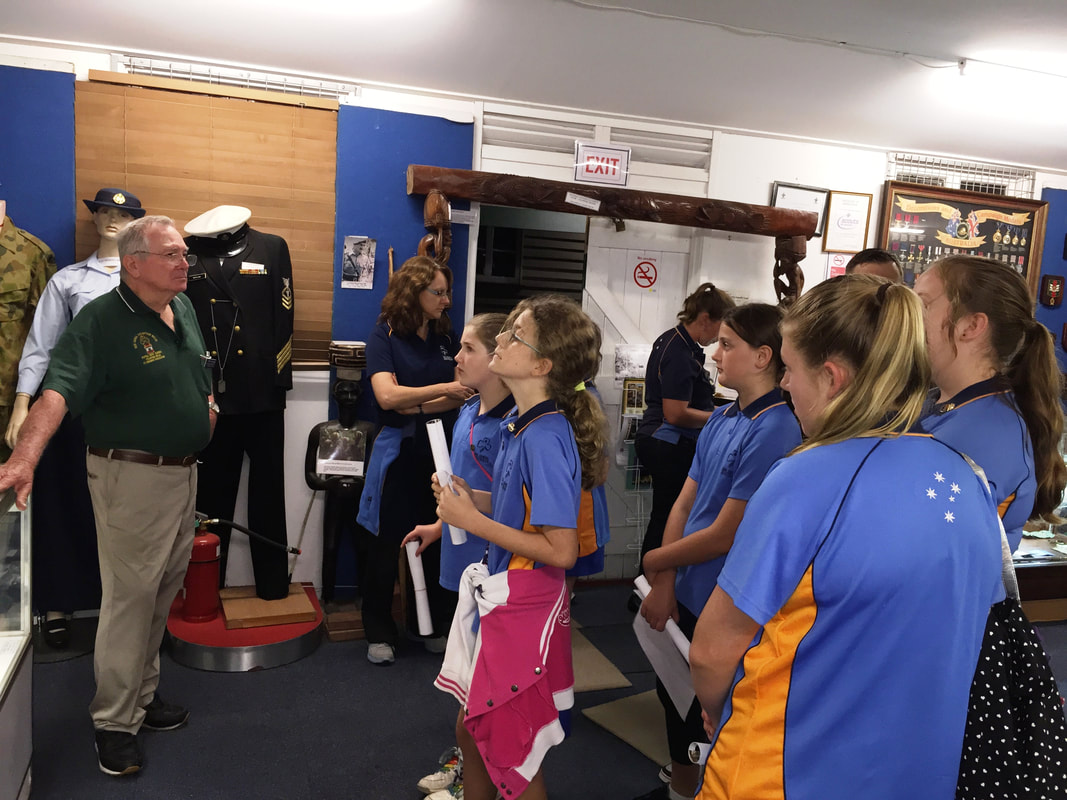The Museum
Nasho Place Wacol, Brisbane
| Museum flyer 2017- July | |
| File Size: | 922 kb |
| File Type: | |
| Commencement of the Museum by John Holland (Dec'd) | |
| File Size: | 18 kb |
| File Type: | docx |
The museum is open 1st Saturday monthly from 1000 - 1300, otherwise by appointment.
For enquiries about the Military Museum:
1. Curator: Contact Paul on 0402 644 181 or email [email protected]
2. Assistant Curator: Contact Colin on 0424 562 030 or email [email protected]
For enquiries about the Military Museum:
1. Curator: Contact Paul on 0402 644 181 or email [email protected]
2. Assistant Curator: Contact Colin on 0424 562 030 or email [email protected]
|
|
You are invited to donate or loan appropriate items to the Museum, with the knowledge they will be properly and securely looked after. The museum is protected by CCTV both inside the museum as well as outside.
Also please do not forget to make a bequest to the NGVR/PNGVR Museum in your will. No animals are allowed into the Museum except for Support Dogs. Objectives of the Museum 1. To conduct and maintain a military heritage museum, on one or more sites, to be known as the NGVR/PNGVR Military Museum. 2. To collect, preserve, restore and display all manner of historical material relating to: (a) the military and auxilliary forces which have served, or are serving, in Papua New Guinea. (b) the cultural and geographical diversity of the Papua New Guinea Archiplago. 3. To encourage research into Australian and Papua New Guinean military history; to publish and circulate articles from books, documents, circulars and magazines of subjects of educational interest to members; and to provide a source of reference and historical records to researchers. 4. To offer an additional public relations vehicle for the Association and to support Australian and Papua New Guinean Defence Forces activities wherever and whenever desirable. 5. To do all such lawful acts as are incidental to or are conductive of the attainment of any or all of the aforesaid aims History of the Museum. (Also see the story of the commencement of the Museum by John Holland. Download it above.) When Wacol army barracks was sold, the Department of Defence set aside 1.5 hectares of land and 5 historic buildings for the National Servicemen's Association of Australia (Qld Branch) or NSAAQ. Through our previous association with NSAAQ, we were invited to bid for use of one of the buildings for a museum. Joe Fisk was the original proposer of this project and devoted much time and effort to see its completion. Our Association was notified late 2005 of its successful bid and was asked by the NSAAQ to have it ready for its official opening on 12 February 2006. This was accomplished by a huge voluntary effort by 13 members of the Association. The Museum was officially opened by the Australian Minister of Veteran Affairs Bruce Billson MP and PNG Consul General for Brisbane, Paul Nerau LLB on Sunday, 12 February 2006, when over 300 members of NSAAQ, our Association and guests attended. In recognition of this work, the Minister granted $3,000 for manikins and exhibit cabinets. The Association was also successful in winning a grant from the Queensland State Gaming Fund to air-condition the Museum. This work has been completed. Work is continuing to collect, catalogue and exhibit the many records, artefacts and memorabilia held. Although rent is minimal, the cost of utilities and general maintenance is borne by the Association. While entry to the Museum is free, the Association appreciates a gold coin donation to assist with maintenance. In 2015 a grant of $35,000 was received from the QLD State Gaming Fund for the extensions to the museum. The Museum has links to the Victoria Barracks and MacArthur Museums in the city. |
Getting displays ready after painting the interior and laying carpet tiles
Japanese Arisaki rifle found at Tol Plantation by Australian forces 1944.
Tol Plantation was the scene of a massacre of 150 Australian soldiers and civilians who had surrendered to the Japanese in 1942l
This rifle is significant to our Association as a number of NGVR soldiers were among those executed.
Tol Plantation was the scene of a massacre of 150 Australian soldiers and civilians who had surrendered to the Japanese in 1942l
This rifle is significant to our Association as a number of NGVR soldiers were among those executed.

Tan Hob-nail boots.
These were issued to PNGVR in 1959-61.
The boots had to be blackened, usually with Raven Oil, and it only took one parade on the cement floor at the local PNGVR Depot to realise that the hob-nails had to also be removed.
Tom Lega (NGVR/ANGAU), PNG Consul General Paul Nerau LLB, Bruce Crawford at the Museum.
The NGVR wore the Bird of Paradise plume in the slouch hat which is on display in the Museum.
The NGVR wore the Bird of Paradise plume in the slouch hat which is on display in the Museum.
Feb 2011. Hanging the new Honour Board
Mal Zimmerman, Paul Brown, Tony Boulter, Leigh Eastwood, Phil Ainsworth.
Below. Leigh Eastwood with the new Honour Board for which he had created the artwork. Paul Brown had obtained the Board.
Mal Zimmerman, Paul Brown, Tony Boulter, Leigh Eastwood, Phil Ainsworth.
Below. Leigh Eastwood with the new Honour Board for which he had created the artwork. Paul Brown had obtained the Board.
Brian Collin (L) assisting John Holland with the recording of Museum exhibits.
Association members at the museum near after a working bee.
Bruce Crawford, John Batze, John Holland, Noel Serafini (visiting from Sydney), Norm Mundy, Paul Brown, Barry Wright, Tom Dowling, Bob Collins.
Bruce Crawford, John Batze, John Holland, Noel Serafini (visiting from Sydney), Norm Mundy, Paul Brown, Barry Wright, Tom Dowling, Bob Collins.
Brisbane Open House at the Museum, 2018. L-R. Colin Gould, Paul Brown, Bob Collins, Mike Griffin, Kieran Nelson.
A group of Girl Guides at the Museum being shown around by Curator John Holland. 2015

Museum Open Day. 2016.
L-R. Mike Griffin, John Batze, Kieran Nelson, Paul Brown, Graeme Blanch, Bob Collins, Peter Rogers, Colin Gould, Phil Ainsworth.
Trevor Connell presents a WWII map of the Madang area to the Museum at a Dining Night. The map was saved from the Madang depot when it closed down in 1975.

























